Spear Globemallow, Spreading Globemallow, Wrinkled Globe Mallow - Sphaeralcea hastulata
|
Sphaeralcea hastulata - Spear Globemallow, Spreading Globemallow, Wrinkled Globe Mallow. Sphaeralcea (Globemallow) is a moderately-sized genus of about 50 species worldwide, with about half of those found in North America. All of the species in the United States are found only in the western half of the country - none east of Texas - except for apparently introduced populations of S. fendleri in Massachusetts and of S. angustifolia in Maryland.
Sphaeralcea hastulata has a pretty narrow distribution, being found in arid habitats only in Arizona, New Mexico, and Texas. There is also at least one report of this plant being found just outside Arizona in southeastern California. There is a lot of variability within the species even in this small range, with up to 11 subspecies and varieties being described by American botanist Thomas H. Kearney in 1935, but since they are difficult to differentiate (especially due to hybridization between species in the genus) very few attempt to differentiate to variety or subspecies. I certainly won't.
Found in:
AZ, NM, TX
Leave comments on Sphaeralcea hastulata at this link. | 
Distribution of Sphaeralcea hastulata in the United States and Canada:
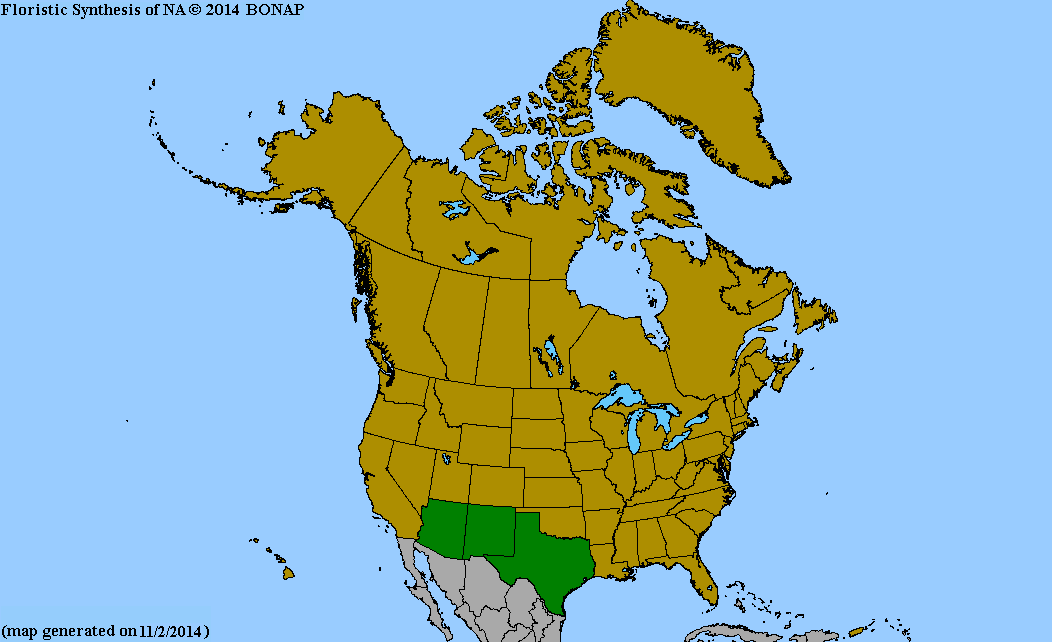
Map courtesy of The Biota of North America Program.
Map color key
Search Our Database: Enter any portion of the Scientific, Common Name, or both.
Do a general Google search of the entire site:
#ad
 Follow USWildflowers on Twitter
| | Site: Petrified Forest National Park, Navajo County, AZ Date: 2016-October-14 | Photographer: Gerald C. Williamson
Nikon D7000
Tamron SP 90MM f/2.8 AF Macro | | The flower of Spear Globemallow is usually a little under 2 inches across, and has 5 petals with are red-orange, pink, or purple. Most of those in my little experience were this orangish color which I would describe as peach. The flower also has 5 sepals, which reportedly form a beak while the flower is still a bud. | | 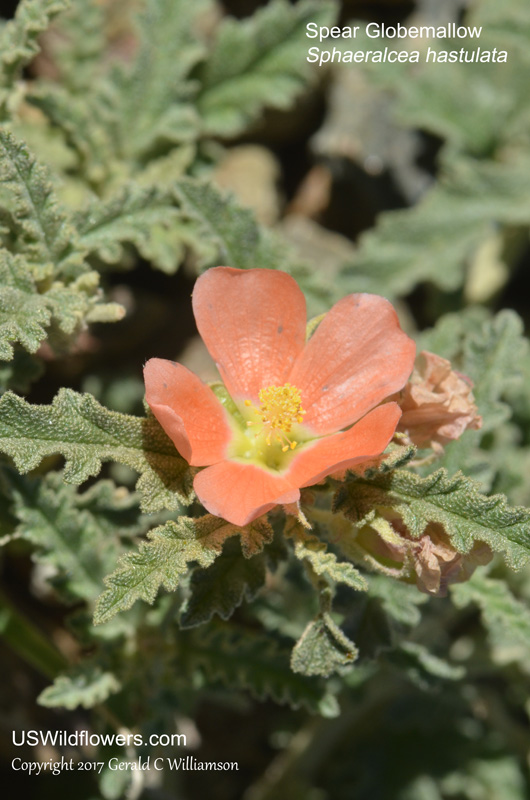
| | Site: Petrified Forest National Park, Navajo County, AZ Date: 2016-October-14 | Photographer: Gerald C Williamson
Nikon D7000 | | The flowers of Sphaeralcea hastulata may be solitary in leaf axils, or in a terminal raceme of several flowers. The petals are up to about 3/4 of an inch long, so the flower may be 1.5 inches wide or more. The anthers of the flower may be either yellow or purple, and are on the androgynophore - the column that contains both the stamens and the pistil in Sphaeralcea. | | Click on the photo for a larger image
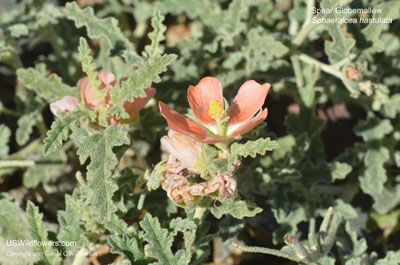
| | Site: Petrified Forest National Park, Navajo County, AZ Date: 2016-October-14 | Photographer: Gerald C Williamson
Nikon D7000 | | Sphaeralcea hastulata is a low growing herb or subshrub (woody at the base of the stem) to about 18 inches high. It grows in arid regions with either sandy or, as the case is here, rocky soils. It can be found blooming from March thru October. | | Click on the photo for a larger image
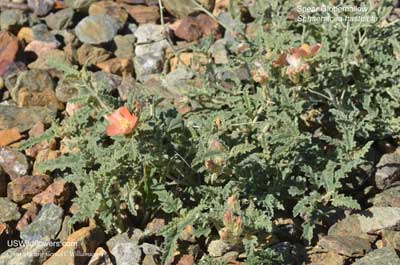
| | Site: Petrified Forest National Park, Navajo County, AZ Date: 2016-October-14 | Photographer: Gerald C Williamson
Nikon D7000 | | The leaves of Spear Globemallow vary between varieties and within the same variety. They are on petioles and the margins are undulate, or with rounded teeth, or are sometimes entire. They are longer than they are wide, usually twice as long or more, and are lanceolate to hastately 3-lobed (yielding the species epithet.) The surface is covered with stellate pubescence. | | Click on the photo for a larger image
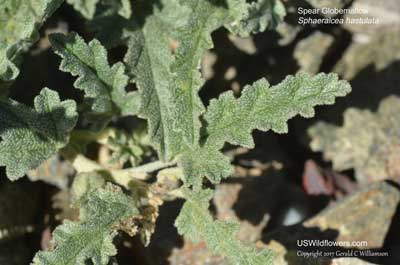
|
References used for identification and information:
|
|
| |
| #ad
|
|






